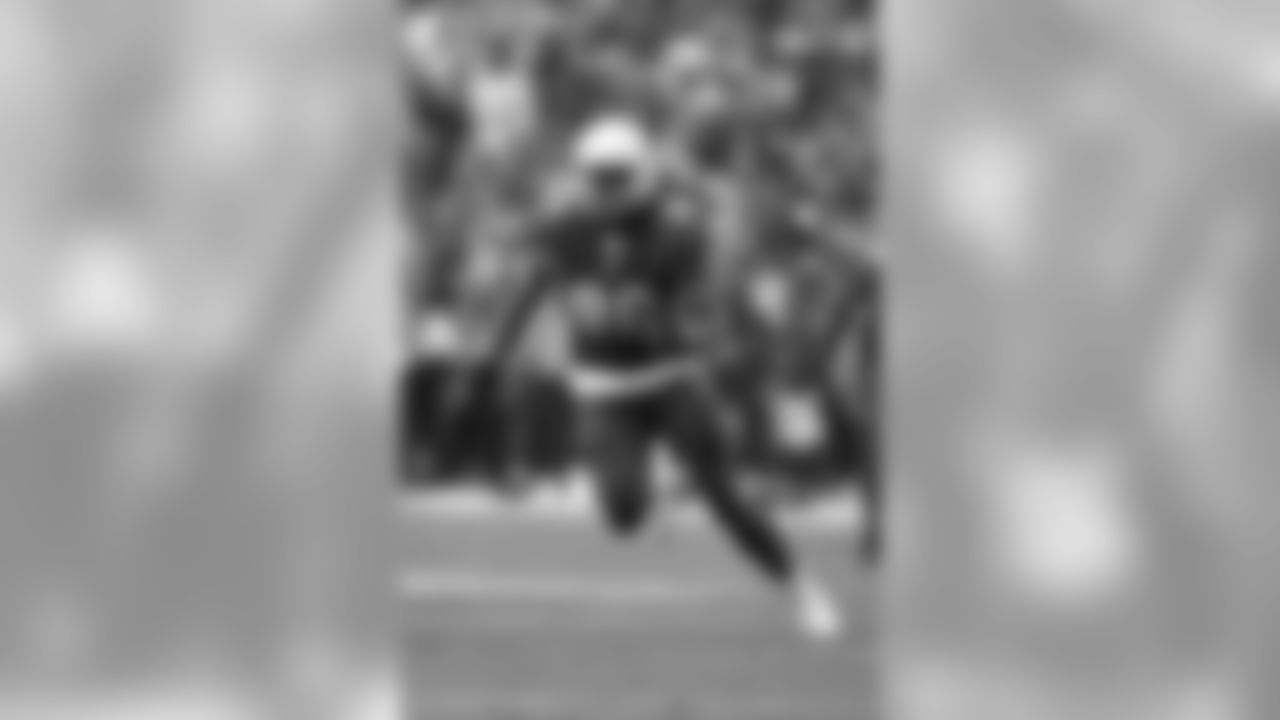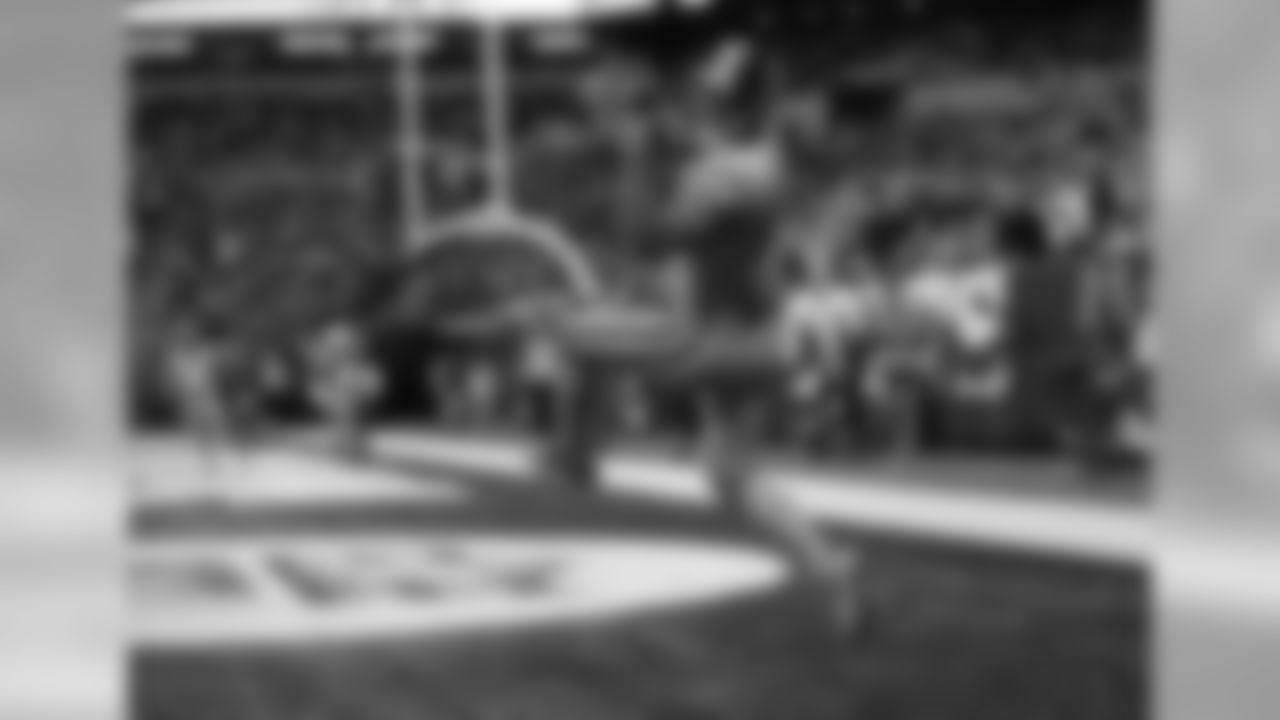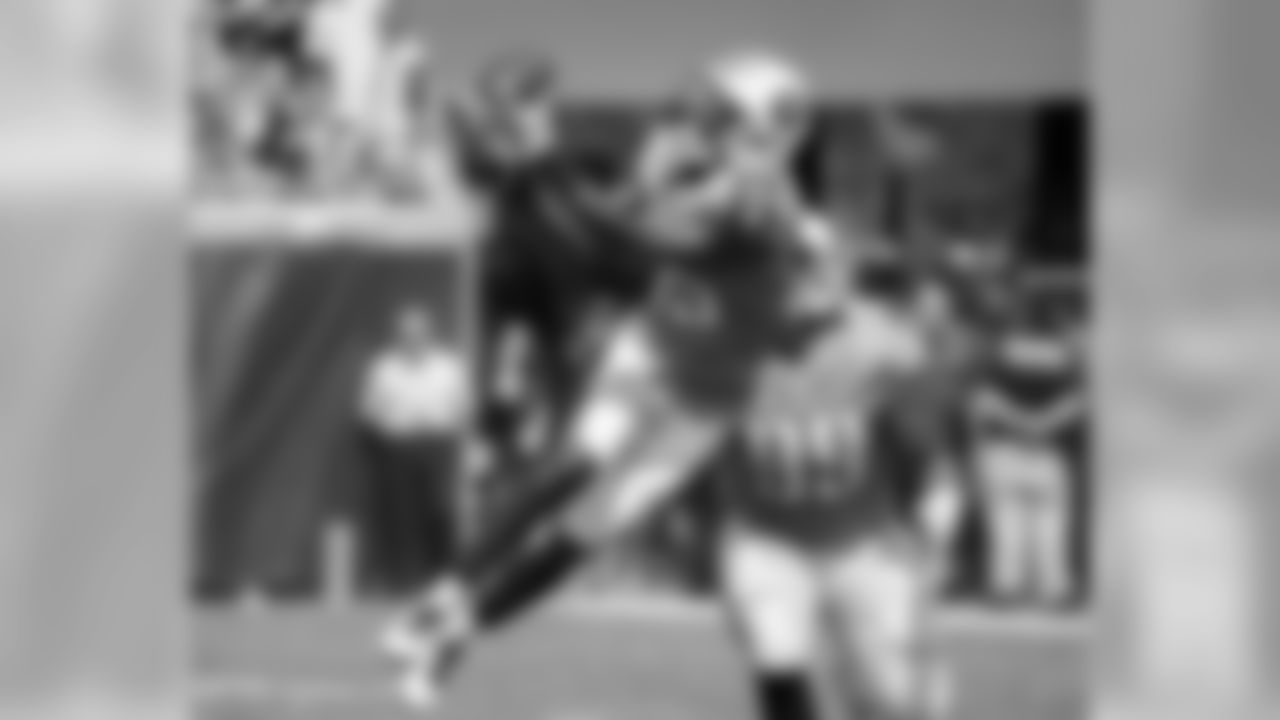NFL owners on Tuesday approved a playing rule that changes the standard for a catch:
Countless camera angles and advances in slow-motion technology made one simple question anything but that in the NFL -- What is a catch?
Hoping to simplify and clarify the answer, NFL owners on Tuesday at the annual meetings in Orlando approved a playing rule that changes the standard for a catch. Here is exactly how the new rule reads:
ARTICLE 3. COMPLETED OR INTERCEPTED PASS. A player who makes a catch may advance the ball. A forward pass is complete (by the offense) or intercepted (by the defense) in the field of play, at the sideline, or in the end zone if a player, who is inbounds:
(a) secures control of the ball in his hands or arms, prior to the ball touching the ground; and
(b) touches the ground inbounds with both feet or with any part of his body other than his hands; and
(c) maintains control of the ball after (a) and (b) have been fulfilled, performs any act common to the game (e.g., tuck the ball away, extend it towards or over the goal line or the line to gain, take an additional step, turn upfield, or avoid or ward off an opponent), or he maintains control of the ball long enough to do so.
Note 1: Movement of the ball does not automatically result in loss of control.
Note 2: If a player, who satisfied (a) and (b), but has not satisfied (c), contacts the ground and loses control of the ball, it is an incomplete pass if the ball hits the ground before he regains control, or if he regains control out of bounds.
Note 3: A receiver is considered a player in a defenseless posture throughout the entire process of the catch and until the player is capable of avoiding or warding off the impending contact of an opponent.
Note 4: If a pass is caught simultaneously by two eligible opponents, and both players retain it, the ball belongs to the passers. It is not a simultaneous catch if a player gains control first and an opponent subsequently gains joint control. If the ball is muffed after simultaneous touching by two such players, all the players of the passing team become eligible to catch the loose ball. Item 6. Carried Out of Bounds.
Note 5: If a player, who is in possession of the ball, is held up and carried out of bounds by an opponent before both feet or any part of his body other than his hands touches the ground inbounds, it is a completed or intercepted pass. It is not necessary for the player to maintain control of the ball when he lands out of bounds.
Got all that? Maybe now you will think twice before yelling at the TV about a referee or broadcaster.
The main change to the rule was the elimination of the "player going to the ground" element.
Previously, a player was considered to be going to the ground if he did not remain upright long enough to demonstrate that he was clearly a runner. If a player went to the ground in the act of catching a pass (with or without contact by an opponent), he had to maintain control of the ball until after his initial contact with the ground, whether in the field of play or the end zone. If he lost control of the ball, and the ball touched the ground before he regained control, the pass was incomplete. If he regained control prior to the ball touching the ground, the pass was complete.
Owners just eliminated that paragraph from the rulebook.
The definition of a catch was one of several playing rule and bylaw proposals adopted by NFL clubs. Here is the full list:
Approved 2018 Playing Rules Summary
1. By Competition Committee; Makes permanent the playing rule that changes the spot of the next snap after a touchback resulting from a free kick to the 25-yard line.
2. By Competition Committee; Changes standard for a catch.
3. By Competition Committee; Makes the penalties for Illegal Batting & Kicking the same.
7. By Competition Committee; Authorizes the designated member of the Officiating department to instruct on-field game officials to disqualify a player for a flagrant nonfootball act when a foul for that act is called on the field.
9. By Competition Committee; Eliminates the requirement that a team who scores a winning touchdown at the end of regulation of a game to kick the extra point or go for two-point conversion.
10. By Competition Committee; In overtime, if the team that possess the ball first scores a
field goal on its initial possession and the second team loses possession by an interception or fumble, the down will be permitted to run to its conclusion, including awarding points scored by either team during the down.
11. By Competition Committee; Lowering the head to initiate contact with the helmet is a foul.
Approved 2018 Bylaws Summary
- By Competition Committee; Makes permanent the liberalization of rules for timing, testing, and administering physical examinations to draft -eligible players at a club's facility.
- By Buffalo; For one year only, amends Article XVII, Section 17.4 to liberalize the rule for reacquisition of a player assigned via waivers.
4a. By Competition Committee; Amends Article XVII, Section 17.16 to permit clubs to trade players from Reserve/Injured. - By Miami; Amends Article XVII, Section 17.1 to remove the requirement that a non-vested player be placed on waivers to be removed from the 90-player roster prior to the roster reduction to 53 players.
- By Minnesota; Amends Article XVIII, Section 18.1 to replace the 10-day postseason claiming period with a 24-hour period.
- By Competition Committee; A player who is designated for return is eligible to be activated after eight games, not eight weeks.
- By Competition Committee; Lengthens the period to execute an Injury Settlement from five business days to seven business days.
- By Competition Committee; Changes the deadline to reinstate players from certain Reserve List categories.
- By Competition Committee; Updates Reserve/Military List procedures to reflect the current League calendar.
Giants.com looks at all the signings, re-signings, and trades from this offseason.

SIGNED: OT Nate Solder (Photo: Ric Tapia via AP)

ACQUIRED VIA TRADE: LB Alec Ogletree (Photo: Ryan Kang via AP)

SIGNED: RB Jonathan Stewart (AP Photo/Bob Leverone)

SIGNED: LB Kareem Martin (Photo: Evan Pinkus via AP)

SIGNED: OL Patrick Omameh (Photo: Rick Wilson via AP)

SIGNED: Safety Michael Thomas (Photo: Margaret Bowles)

SIGNED: WR Cody Latimer (AP Photo/AJ Mast)

SIGNED: DE Josh Mauro (AP Photo/Rick Scuteri)

SIGNED: CB Teddy Williams (Photo: Margaret Bowles via AP)

SIGNED: CB B.W. Webb (AP Photo/Rick Scuteri)

SIGNED: DB Curtis Riley (AP Photo/Stephen B. Morton)

RE-SIGNED: DT Robert Thomas (AP Photo/Mark Tenally)

RE-SIGNED: DE Kerry Wynn (Photo: Evan Pinkus via AP)

RE-SIGNED: G Jon Halapio (Photo: Ryan Kang via AP)

RE-SIGNED: LB Mark Herzlich (Photo: Ric Tapia via AP)






